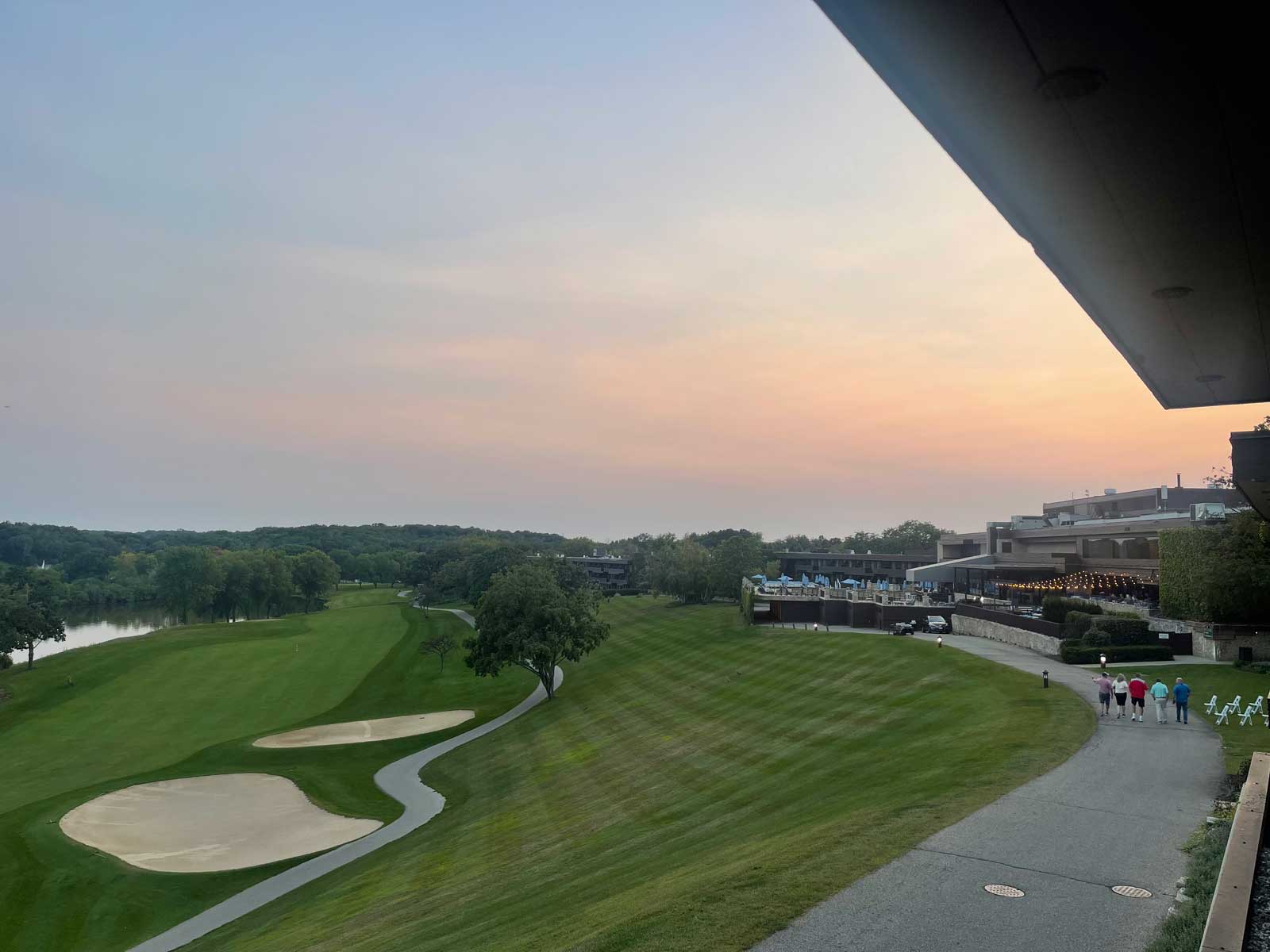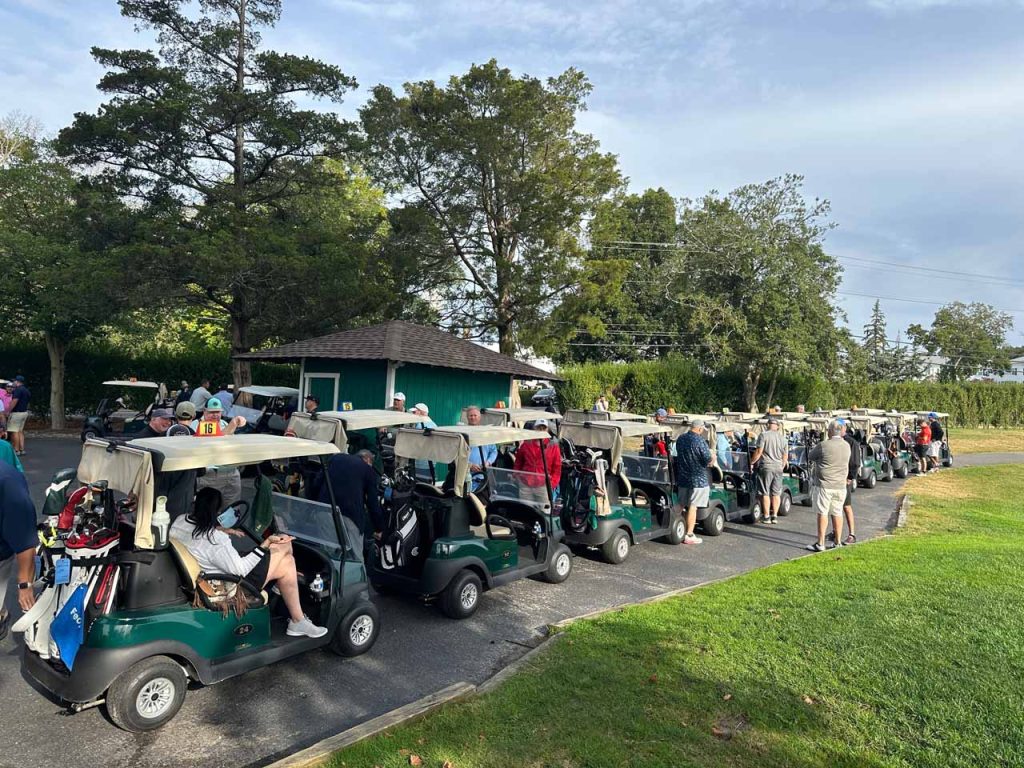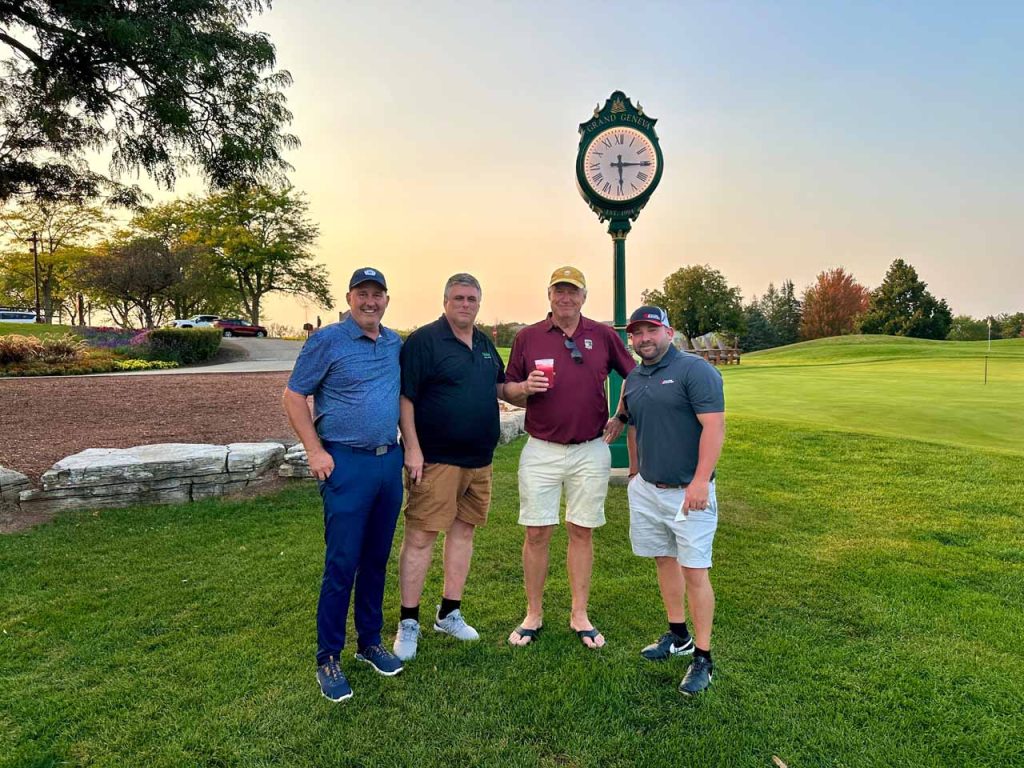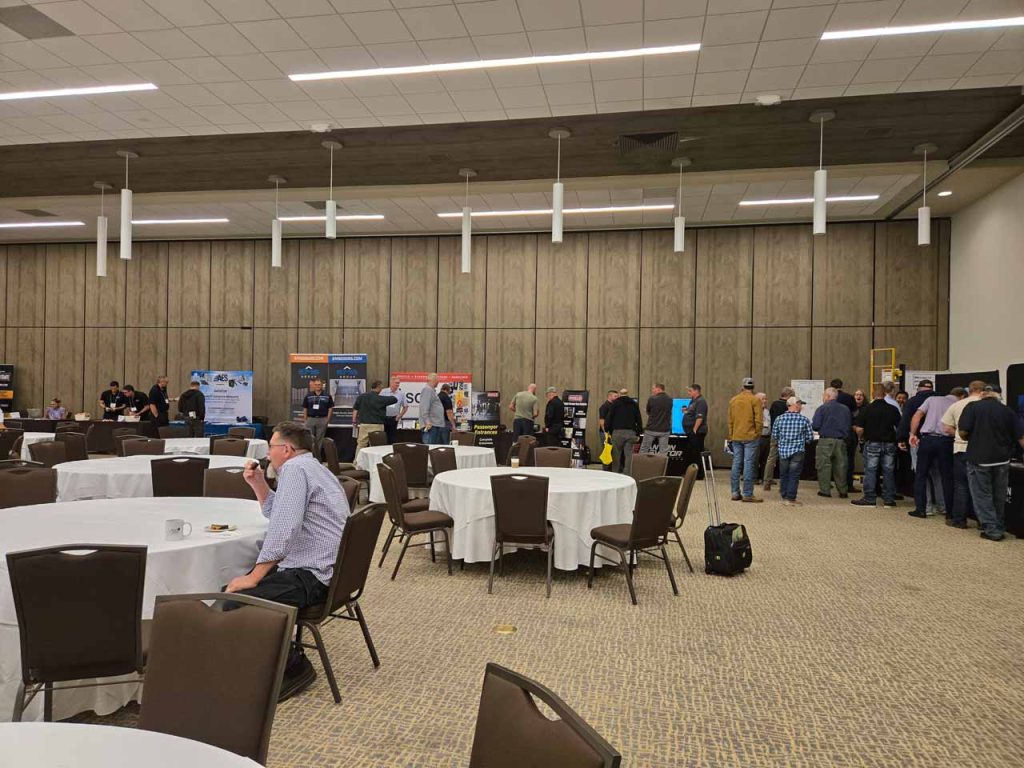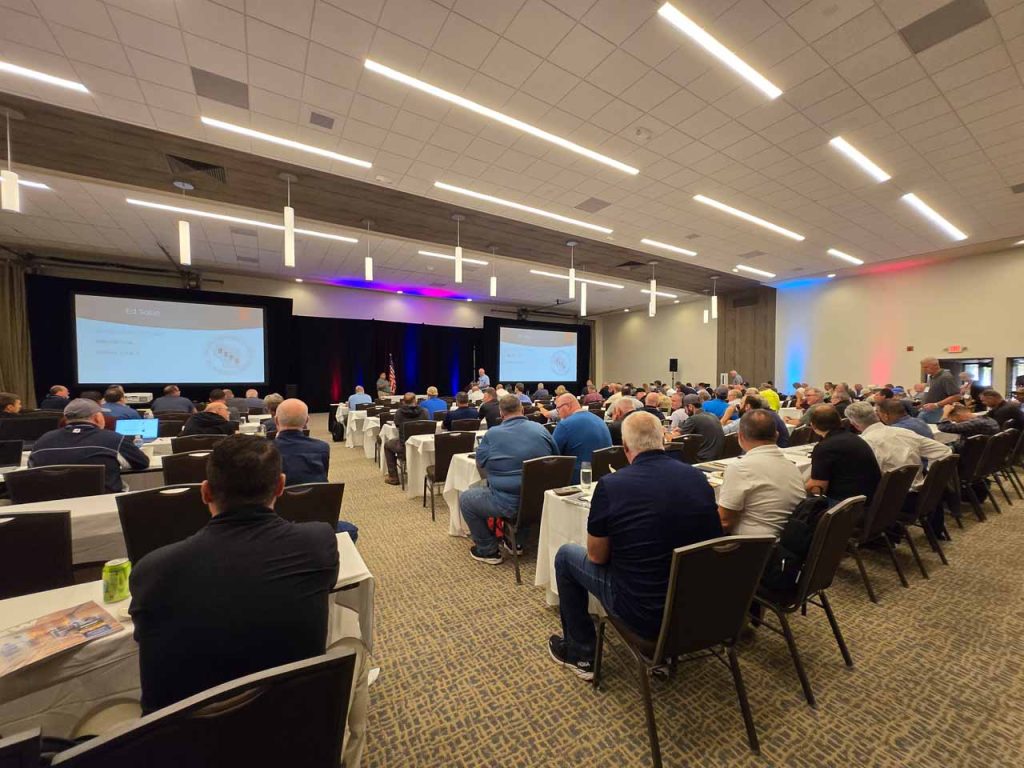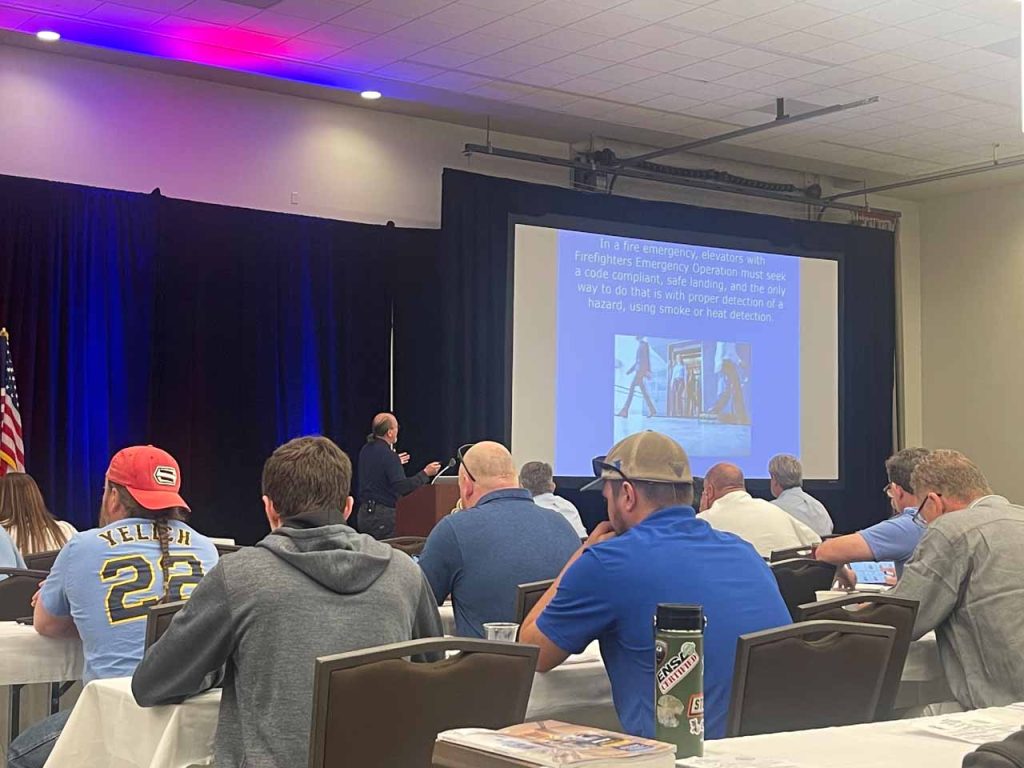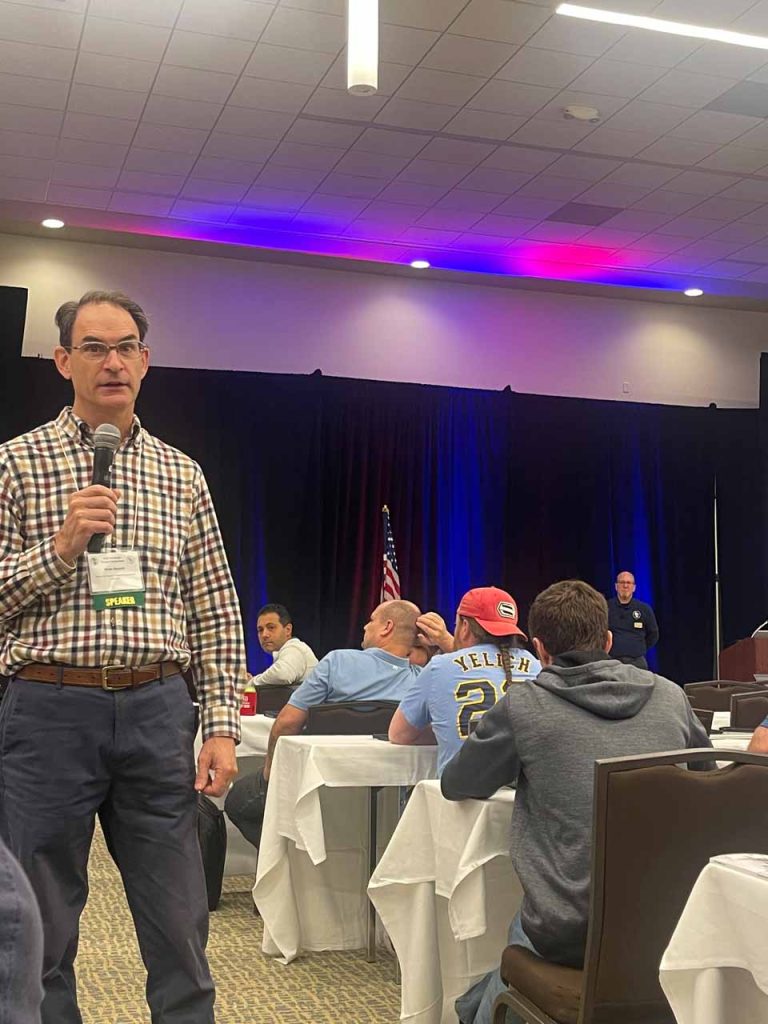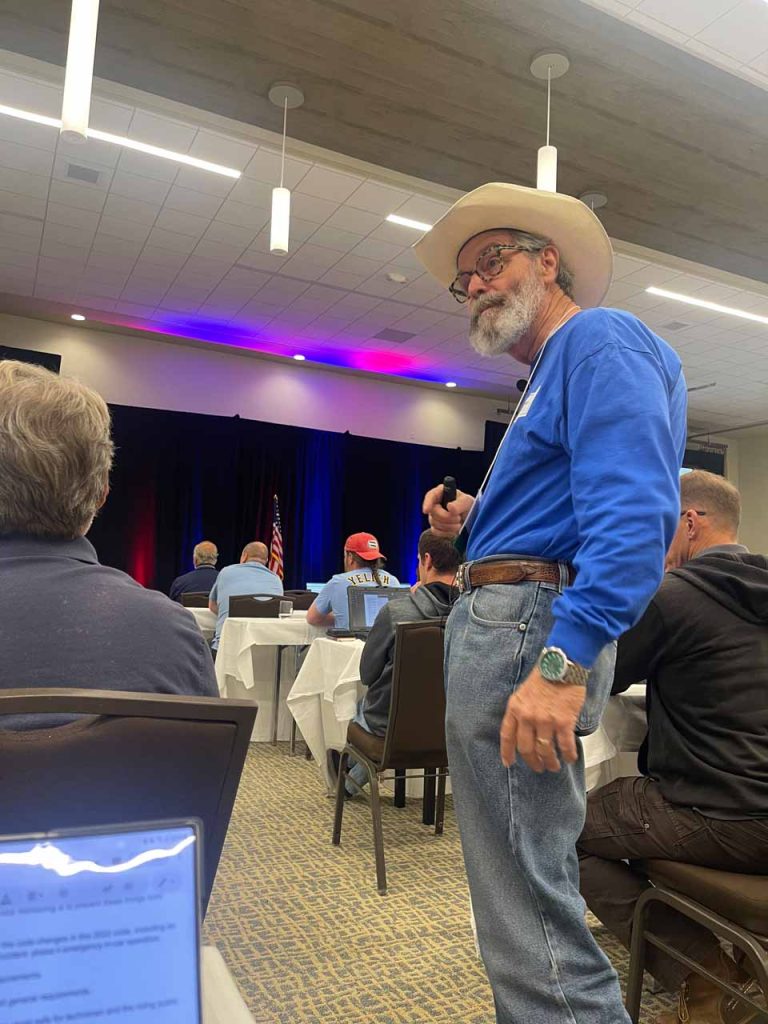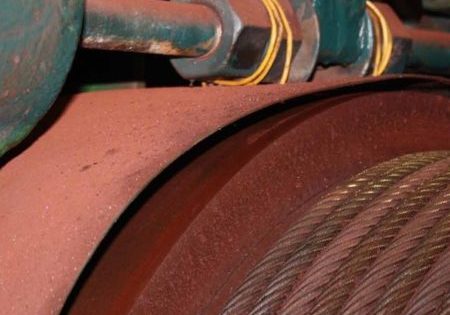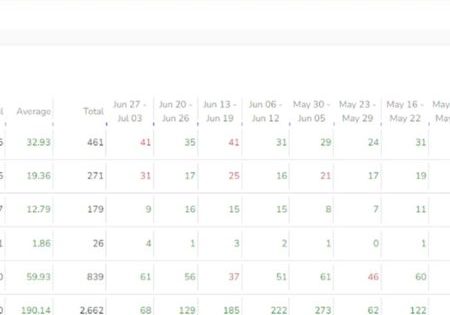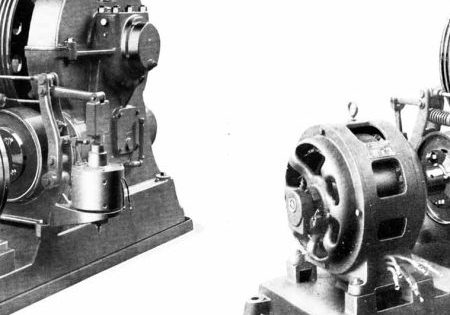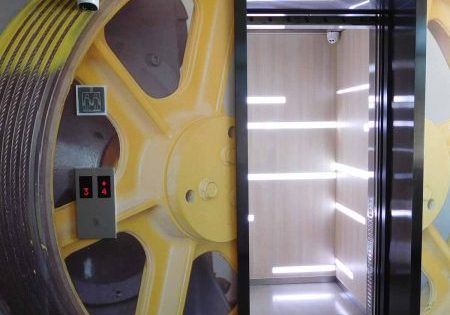Annual Wisconsin Elevator Symposium offers fun experiences and education, raises funds and more.
This is the third time your author has been able to experience the generosity of NAESA International and be warmly welcomed to attend the annual Wisconsin Elevator Symposium. Everyone from NAESA staff to those in attendance and the staff at the Grand Geneva Resort & Spa are friendly each year, often putting what your author knows as “Southern hospitality” to shame. I look forward to the trek to Lake Geneva, Wisconsin, each year now, and this year did not disappoint.
The 2024 Wisconsin Symposium was another great success with impressive attendance of 285, which is 45 more people than last year’s event. The Forum is always filled with inspectors, business owners, presenters and more rounding out the attendees.
Wednesday, September 11
The annual Elevator Escalator Safety Foundation (EESF) golf outing at the Wisconsin Symposium, of which NAESA is a founding member and one of the regular sponsors and donors to EESF, was held at the Grand Geneva Resort. NAESA International Executive Director Emerald Kuhns is EESF treasurer and actively involved in the Foundation’s mission. Golf organizers and participants said the outing was a great success. There were 62 golfers and 15 teams that played the beautiful Highlands Course at Grand Geneva. After lunch, golfers got into their carts and observed 20 s of silence for 9/11. The winning golf team consisted of Brad Ries, Michael Gorman, Mark Munson and Tom Thompson. Matt Yelland won second place in the 50/50 drawing for a round of golf at Grand Geneva.
Thursday, September 12
As usual, the day started early with a breakfast buffet of pastries for attendees, and your author made sure to arrive early to get something to eat and get a good seat. Conference rooms B and C of the Forum at the Grand Geneva Resort were filled with the buzz of conversations between colleagues, old friends and new acquaintances.
Also in his usual form, Jack Day, NAESA education director and host of the event, spent the early morning welcoming everyone and reminding them to sign in to get their continuing education credit. Helping Day run the show was David Newmoyer, the new NAESA assistant education director and symposium co-emcee. The event typically begins with the playing of the “Star-Spangled Banner,” and this year’s event was no different. Being so close to 9/11, the moment was extra special.
Then, Kim Schmitt from the State of Wisconsin welcomed everyone and asked who had been to all 18 of the Wisconsin Symposium events. He then presented a few facts to the group, saying that from September 2023 to September 2024 there were 704 plan reviews for elevators and conveyances with 40% new installations, 40% modernizations and 20% residential units. He said there are 20,000 active elevators in the state of Wisconsin, excluding Milwaukee and Madison.
The first presenter of the day was Ken Smith with Ken Smith and Associates, presenting “Step/Skirt Performance Index Tester Training and Anaylsis.” He went over the development, testing and analysis of the Performance Index, including the equipment needed, how to set it up and how to download the results and analyze them. The presentation looked at calf, shoe and hand/finger entrapment. Smith emphasized multiple times that this was all done before Crocs™ shoes were introduced but said that not much has been done for them. As is the case with the NAESA presentations, an emphasis was placed on the AMSE A17/CSA B44 Safety Code for Elevators and Escalators and updates over the years.
Up next, Kevin Heling with Elevator Technical & Training Associates presented “Alternative Testing +10 Years on: Progress, Performance and Results.” Heling’s presentation discussed how he believes his company’s device can take the place of full-load testing, which has been done for 68-plus years in the U.S. The device uses weight sensors in the place of a full load. Heling said:
“For me, this is the best way if you need to weigh a car in the field. This is far better than a crane scale. I’ve seen a lot of tests; I think little of full load testing. We’re not getting what we think we are on a lot of them.”
Again, a large amount of Code was covered, and Heling’s presentation included a lot of graphs and detail. “We should look at changing the Code because technology allows us to change it,” he said. “We can do tests that won’t damage elevators.”
After a quick break with snacks and a chance to visit with exhibitors, the group returned to their seats for a shared presentation from three employees from the State of Wisconsin. Ed Sabo began and complimented his team by saying, “I’m awesome. Mark [Urban] is great. Brian [Rausch] is perfection.” His brief presentation covered “Ascending Car Over Speed Protection and Unintended Motion & United Motion Protection,” looking at what is needed to prevent this and how to test what is required in an initial inspection.
Up next, Brian Rausch gave some history of the growth of the Wisconsin Symposium, saying it has been in existence for more than 18 years under a different name. He said they knew it was something important when “the guy who writes articles for ELEVATOR WORLD” — also known as John Koshak — was planning to attend the event. He said the history was important because “this is really about you.” He encouraged those in attendance to send him topics/issues they want to see presented. “This is your event; this is your symposium. Let us know what you want to see.” He then went over new information on the state’s website and covered a multitude of Code/maintenance issues for inspectors in Wisconsin, including welding and residential outdoor inclined lifts. To close the presentation, Mark Urban discussed issues around fire emergencies, sprinklers, smoke/heat sensor placement and more on the topic. This led to good conversation around the room, which Urban said he was hoping for: “When I think of the experience level in this room, it’s intimidating. I hope this generates conversation and comments.”
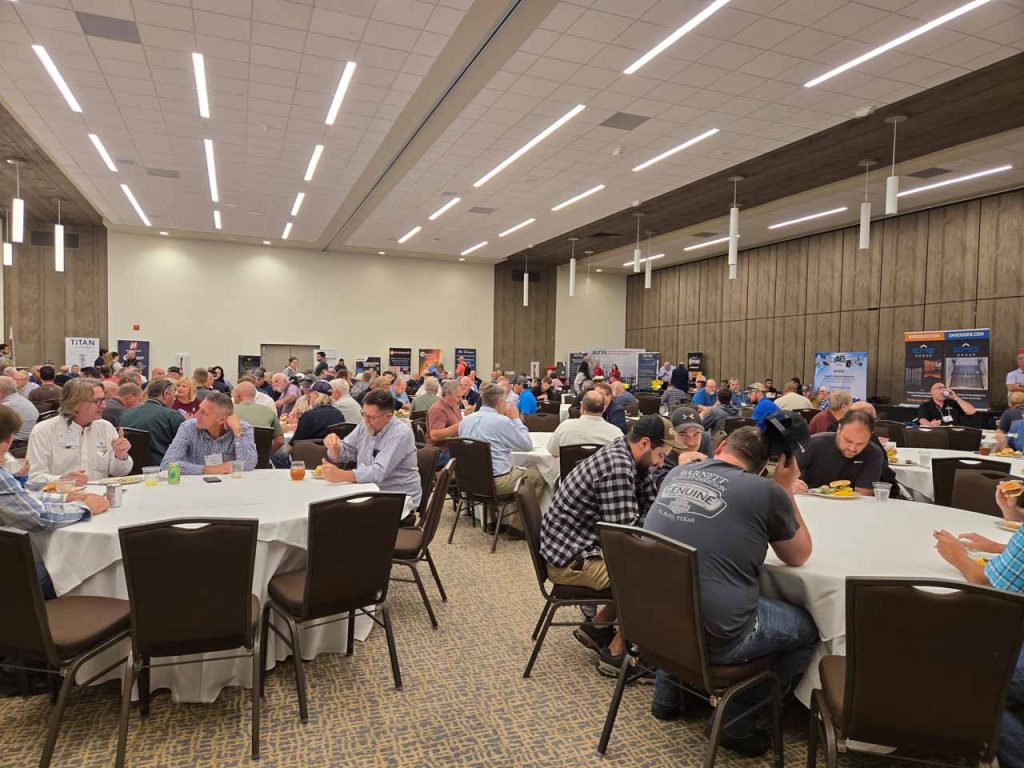
Next, the group got a break with lunch and a chance to meet with exhibitors, talk with colleagues, get outside for some sunshine and more. Your author heard a number of positive comments about the large size of the crowd. And, thank you to everyone who took a copy of EW from the registration table!
After lunch, it was time to get back to it. First up was “Door Lock Monitoring (DLM) Code and Testing Requirements,” presented by Ian MacMillan with KONE. He began by asking what door lock monitoring is and when it first was incorporated into the Code. The right answer — 1996 — earned an audience member a sweatshirt, causing a buzz of excitement and murmuring from others in the room. MacMillan discussed why DLM is important and went over some incidents that have occurred, including one that almost happened to him, saying that the whole idea of DLM is to prevent these things from happening. He went over the ASME 2022 2.26.6 Code, Code changes, maintenance requirements and KONE’s procedures and general requirements. “Safety is the greatest concern here,” he said, adding that this is the case for both technicians and the riding public.
Up next, Schindler’s Lawrence Taylor presented “Schindler Escalator 9300.” Decked in a cowboy hat and a “Crusty Old Code Guy” t-shirt, Taylor made sure everyone in the room knew that it is necessary to use a metric ruler because numeric estimations using a regular ruler are not exactly the same as a metric ruler. For his presentation, he said he visited the Schindler escalator factory in North Carolina and took some pictures. He then covered numerous escalator components and what needs to be checked on each.
There was a brief afternoon break before David Harris with the Northwest Colorado Council of Governments (NWCCOG) presented “Emergency Power International Building Code (IBC).” The presentation looked at emergency power and testing and the relationship between the IBC and ASME A17. He said that, in the IBC, two factors drive requirement for elevator installation: egress and accessibility. He then went over the chapters that cover each. He also reviewed a number of ASME definitions, adding that a statement he loves is: “Words mean things.” There was a lot of conversation and questions during Harris’ presentation about what’s required in the testing and what’s in the Code. “I love interactive classes because everyone gets involved,” he said.
After the presentation, the winner of the EESF raffle was announced, and NAESA elections were held for a Board of Directors (BOD) slot and four AHJ positions. Other symposium attendees got a short break before heading back to the Forum for the Evening Reception. With food and drinks flowing, those in attendance were able to socialize, meet with exhibitors and participate in the EESF silent auction. In total, from the Symposium Forum, two 50/50 raffles, mulligans and the silent auction, more than US$3,800 was raised for EESF.
Friday, September 13
The last day of the Wisconsin Symposium again began bright and early with breakfast at 6:30 a.m. Attendees were reminded to sign in to receive their education credits before presentations began at 7:30 a.m.
The first presentation of the day was “Evolving Elevator Technologies: Emergency Communications” by Daniel Goldstein with Kings III. Goldstein looked at ASME A17.1 2019 and 2022 Code updates regarding emergency communications within elevators. He said the previous Code updates addressed requirements for verbal communication; however, new Code advancements address communication with those that are verbally and/or hearing impaired. He dove down into the specifics within section 2.27.1.1.3, which directly addresses the need for a text display where authorized personnel can communicate via text with trapped passengers, as well as a means to display video for authorized personnel to observe passengers. Authorized personnel now need to perform voice and video monitoring, and video requirements require the streaming of video through internet connections to authorized personnel.
This was followed by Joe McAnulty with ATIS who presented “2020 EIFESH, Car Top Access/Egress Section 8.1,” which covered accessing and egressing from the elevator car top. The presentation provided guidance on safely entering and exiting the car top. “NAESA is dedicated to safety and promoting safe work practices,” McAnulty said. The presentation promoted keeping safety the top priority while working on or around elevators.
There was another short break before John Stockstill with TK Elevator (TKE) presented “EOX and Code Compliance.” The crowd took a minute to settle down, and Stockstill had no problem getting loud to get everyone’s attention by yelling, “Hey! Look at me!” He said he has been retired a few times, but that only lasted a few months as he needed something to do. He mentioned the TKE test tower in Atlanta, saying “I’d love to show it to you.” He added that TKE tries to get school kids to come visit the tower to get them involved in engineering. Stockstill said he always presents a safety slide “because at the end of the day, we all need to go home with the body parts that we came with; and we can, except for cutting corners.” Another refrain he used was, “You get what you inspect, not what you expect.” He went over the details of the EOX and the related Codes and standards. There were good questions and conversation during his presentation, as well.
Lunch was held with a last chance to visit exhibitors before the final presentation by Kevin Cunningham with Hydrasafe Brake reviewing “Hydrasafe Brake Unintended/Ascending Device.”
The 2024 Wisconsin Symposium ended with a Board of Certification Meeting and an Executive Committee Meeting, along with both a Finance Committee Meeting and the BOD Meeting on Saturday.
In all, the event provided a total of 1.2 CEUs for full attendance both days. The CEUs are approved by NAESA International, QEITF, the LA Fire Marshal, the State of Delaware, the State of Minnesota, the State of Wisconsin, the State of Washington and the National Association of Elevator Contractors. It is approved by the State of Virgina for .8 CEUs.
The Wisconsin Elevator Symposium will again be held in Lake Geneva in 2025.
Get more of Elevator World. Sign up for our free e-newsletter.
